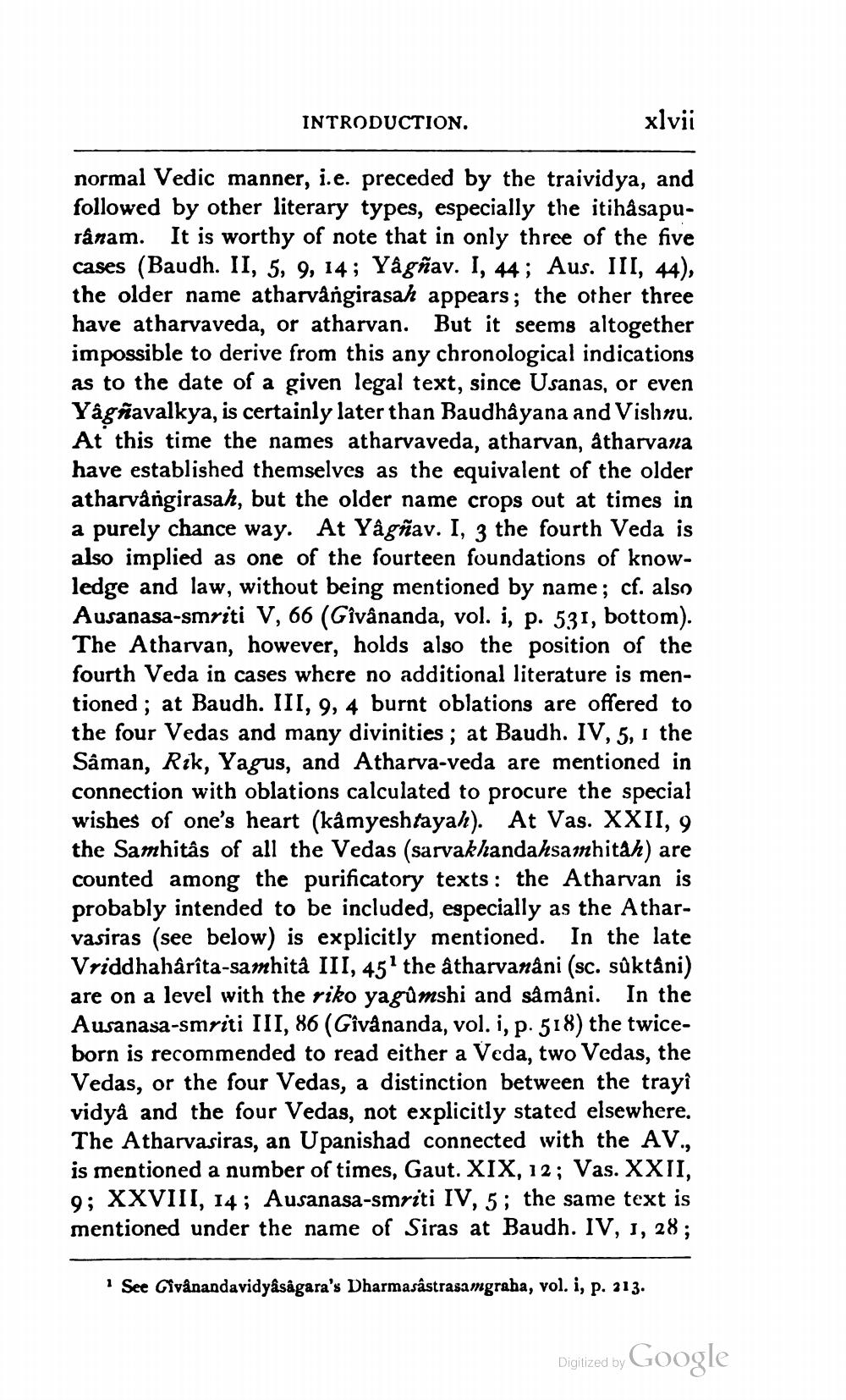________________
xlvii
normal Vedic manner, i.e. preceded by the traividya, and followed by other literary types, especially the itihâsapurânam. It is worthy of note that in only three of the five cases (Baudh. II, 5, 9, 14; Yâgñav. I, 44; Aus. III, 44), the older name atharvângirasah appears; the other three have atharvaveda, or atharvan. But it seems altogether impossible to derive from this any chronological indications as to the date of a given legal text, since Usanas, or even Yagnavalkya, is certainly later than Baudhâyana and Vishnu. At this time the names atharvaveda, atharvan, atharvana have established themselves as the equivalent of the older atharvângirasah, but the older name crops out at times in a purely chance way. At Yâgñav. I, 3 the fourth Veda is also implied as one of the fourteen foundations of knowledge and law, without being mentioned by name; cf. also Ausanasa-smriti V, 66 (Givânanda, vol. i, p. 531, bottom). The Atharvan, however, holds also the position of the fourth Veda in cases where no additional literature is mentioned; at Baudh. III, 9, 4 burnt oblations are offered to the four Vedas and many divinities; at Baudh. IV, 5, I the Sâman, Rik, Yagus, and Atharva-veda are mentioned in connection with oblations calculated to procure the special wishes of one's heart (kâmyeshtayah). At Vas. XXII, 9 the Samhitâs of all the Vedas (sarvakhandahsamhitah) are counted among the purificatory texts: the Atharvan is probably intended to be included, especially as the Atharvasiras (see below) is explicitly mentioned. In the late Vriddhahârîta-samhitâ III, 451 the âtharvanâni (sc. sûktâni) are on a level with the riko yagûmshi and sâmâni. In the Ausanasa-smriti III, 86 (Gîvânanda, vol. i, p. 518) the twiceborn is recommended to read either a Veda, two Vedas, the Vedas, or the four Vedas, a distinction between the trayî vidya and the four Vedas, not explicitly stated elsewhere. The Atharvasiras, an Upanishad connected with the AV., is mentioned a number of times, Gaut. XIX, 12; Vas. XXII, 9; XXVIII, 14; Ausanasa-smriti IV, 5; the same text is mentioned under the name of Siras at Baudh. IV, 1, 28;
INTRODUCTION.
1 See Givânandavidyâsâgara's Dharmasâstrasamgraha, vol. i, p. 213.
Digitized by
Google




